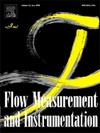Development of a prototype for measuring the fuel consumption of ocean-going ships
IF 2.3
3区 工程技术
Q2 ENGINEERING, MECHANICAL
引用次数: 0
Abstract
The maritime sector is working hard to reduce greenhouse gas emissions. Overall, the shipping industry is under considerable pressure to identify innovative solutions, including a transition from conventional to cleaner fuels by 2050.
The most promising future fuels are ammonia, ethanol and methanol, which have lower viscosities than current fuels. These new generation fuels are sustainable and have the potential to significantly reduce greenhouse gas emissions.
Positive displacement meters are one of the most common types of flow meters used to measure fuel in the marine sector. However, they usually require a certain viscosity to perform properly. The aim of this study is to investigate the measurement performance of a prototype positive displacement fuel consumption meter capable of measuring next generation marine fuels and fuel blends with these and established fuels. The paper outlines the development of the prototype and how it was subsequently improved. Measurements were carried out on the prototype with fuels of different viscosities and line pressures relevant to shipping. The results prove that the meter operates almost independently of viscosity and pressure, making it suitable to accurately measure today's (current fuels), tomorrow's (blended fuels) and future fuels. Finally, suggestions for further improvements are given.
研制测量远洋船舶燃油消耗量的样机
海事部门正在努力减少温室气体排放。总的来说,航运业面临着巨大的压力,需要找到创新的解决方案,包括到2050年从传统燃料过渡到更清洁的燃料。最有希望的未来燃料是氨、乙醇和甲醇,它们的粘度比目前的燃料低。这些新一代燃料是可持续的,具有显著减少温室气体排放的潜力。正位移仪表是最常见的流量计类型之一,用于测量燃料在海洋部门。然而,它们通常需要一定的粘度才能正常工作。本研究的目的是研究一个原型正位移燃料消耗仪的测量性能,该测量仪能够测量下一代船用燃料以及与这些燃料和现有燃料混合的燃料。这篇论文概述了原型机的发展,以及它后来是如何改进的。用不同粘度的燃料和与航运相关的管道压力对原型进行了测量。结果证明,该仪表的工作几乎独立于粘度和压力,使其适用于准确测量今天(当前燃料),明天(混合燃料)和未来的燃料。最后,提出了进一步改进的建议。
本文章由计算机程序翻译,如有差异,请以英文原文为准。
求助全文
约1分钟内获得全文
求助全文
来源期刊

Flow Measurement and Instrumentation
工程技术-工程:机械
CiteScore
4.30
自引率
13.60%
发文量
123
审稿时长
6 months
期刊介绍:
Flow Measurement and Instrumentation is dedicated to disseminating the latest research results on all aspects of flow measurement, in both closed conduits and open channels. The design of flow measurement systems involves a wide variety of multidisciplinary activities including modelling the flow sensor, the fluid flow and the sensor/fluid interactions through the use of computation techniques; the development of advanced transducer systems and their associated signal processing and the laboratory and field assessment of the overall system under ideal and disturbed conditions.
FMI is the essential forum for critical information exchange, and contributions are particularly encouraged in the following areas of interest:
Modelling: the application of mathematical and computational modelling to the interaction of fluid dynamics with flowmeters, including flowmeter behaviour, improved flowmeter design and installation problems. Application of CAD/CAE techniques to flowmeter modelling are eligible.
Design and development: the detailed design of the flowmeter head and/or signal processing aspects of novel flowmeters. Emphasis is given to papers identifying new sensor configurations, multisensor flow measurement systems, non-intrusive flow metering techniques and the application of microelectronic techniques in smart or intelligent systems.
Calibration techniques: including descriptions of new or existing calibration facilities and techniques, calibration data from different flowmeter types, and calibration intercomparison data from different laboratories.
Installation effect data: dealing with the effects of non-ideal flow conditions on flowmeters. Papers combining a theoretical understanding of flowmeter behaviour with experimental work are particularly welcome.
 求助内容:
求助内容: 应助结果提醒方式:
应助结果提醒方式:


